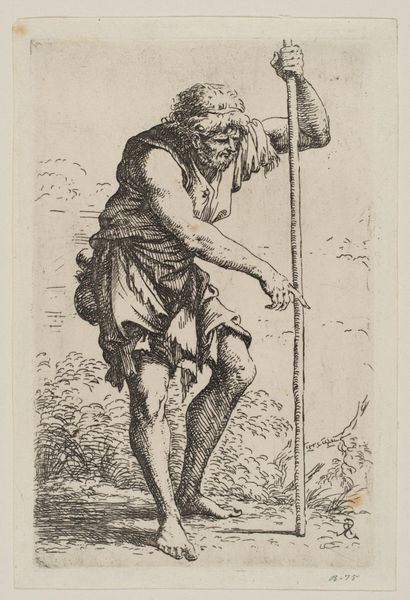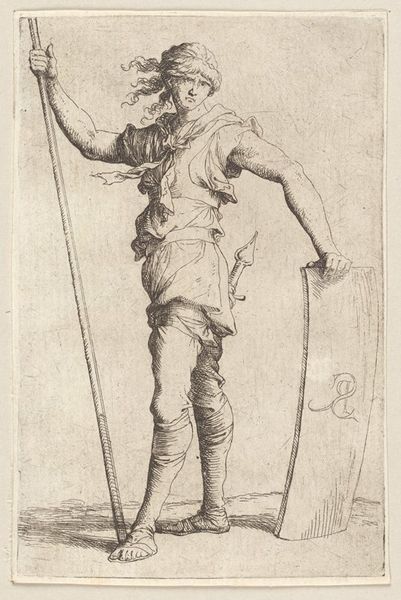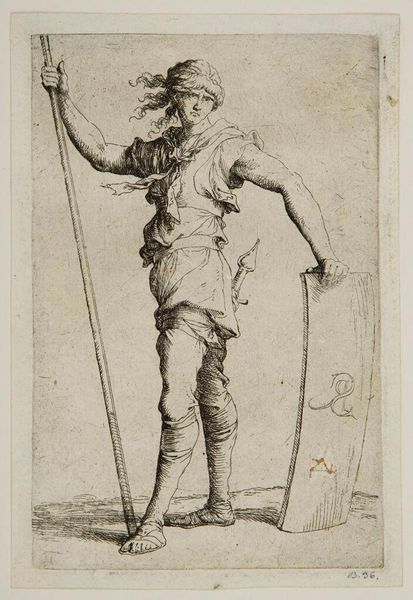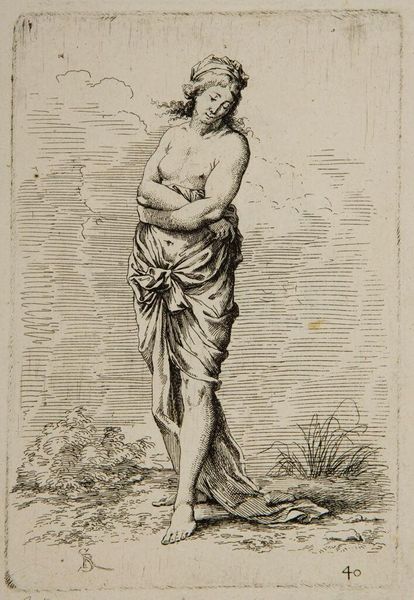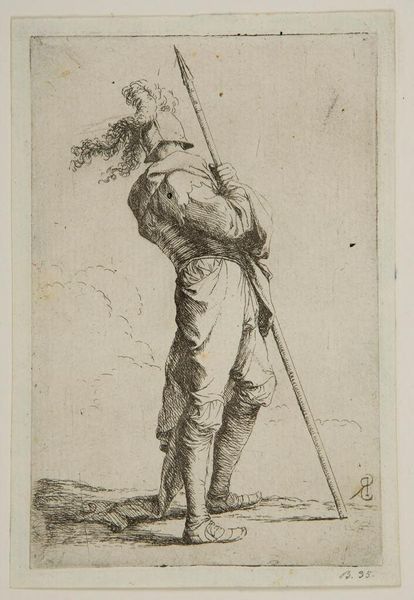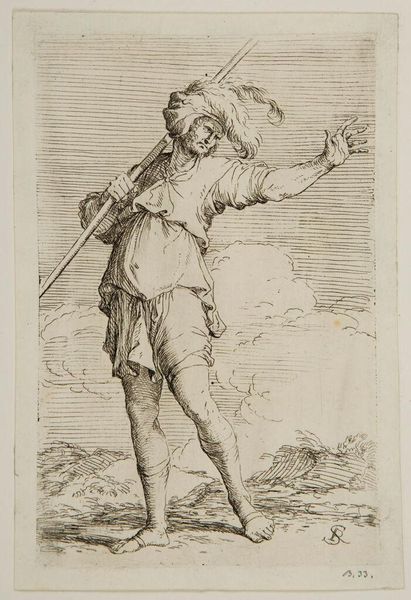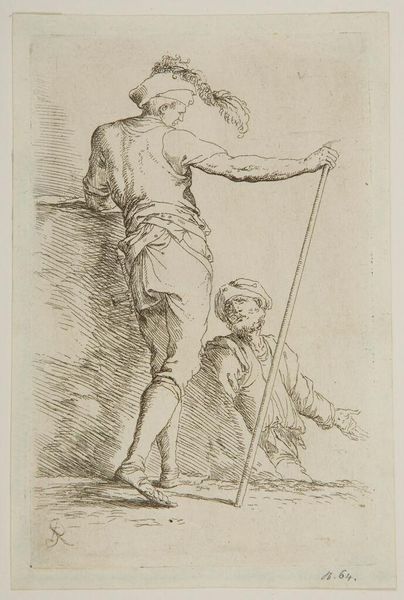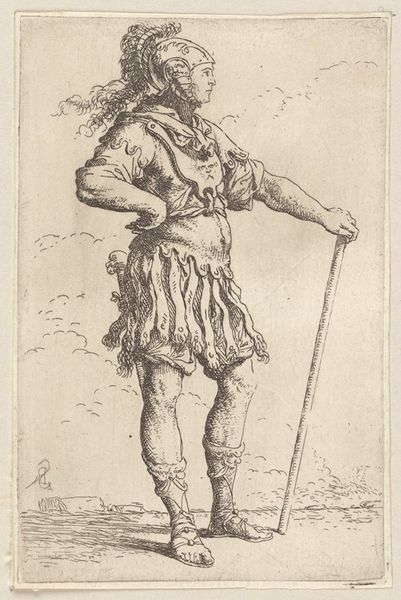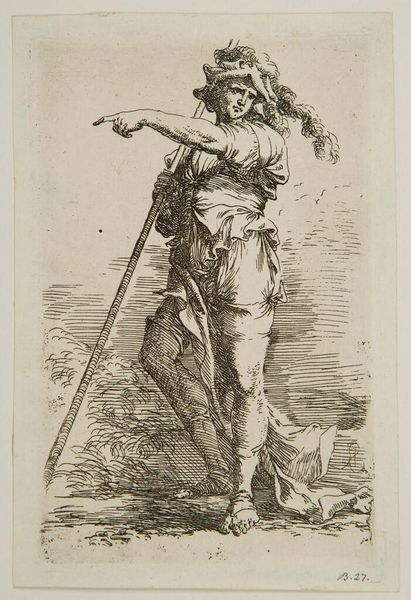
Copyright: CC0 1.0
Curator: This etching, "Copy after the Figurine," by Salvator Rosa, offers a glimpse into 17th-century artistic practices. What are your first thoughts? Editor: It strikes me as a portrayal of resilience, a solitary figure marked by hardship, yet standing firm, almost defiant. Curator: Rosa, active in a tumultuous period, engaged with imagery that touched upon social dynamics and perceptions. This figure, possibly a bandit or philosopher, challenges conventional portrayals of power. Editor: The figure’s attire, a turban and loosely draped cloth, coupled with the weapon-like staff, certainly evoke a sense of otherness. Is he a marginalized figure, a comment on the era’s social strata? Curator: Precisely. Rosa's work often blurs the lines between noble and rogue, prompting us to consider the fluidity of identity and social roles in the 17th century. Editor: The starkness of the etching, the figure set against a sparse landscape, amplifies this sense of isolation and perhaps the precarity of life for those outside the established order. I wonder, how would contemporary audiences have perceived this image? Curator: Probably as both romantic and unsettling, a reflection of a society grappling with its own internal contradictions and power structures. Editor: It leaves me considering the enduring relevance of such portrayals, how artists continue to reflect and challenge societal norms through representations of the marginalized. Curator: Indeed, this piece serves as a potent reminder of art's capacity to provoke dialogue and challenge entrenched perspectives.
Comments
No comments
Be the first to comment and join the conversation on the ultimate creative platform.

